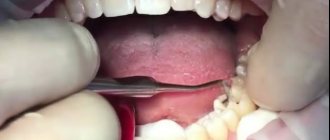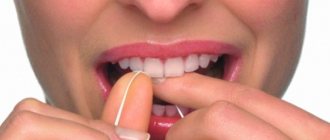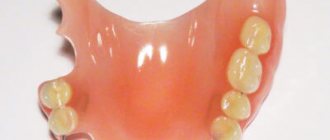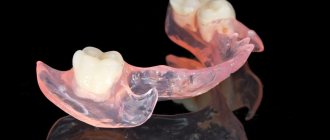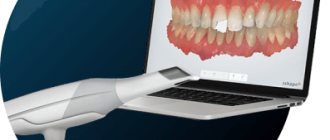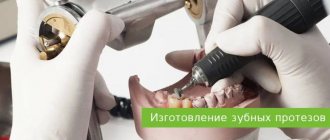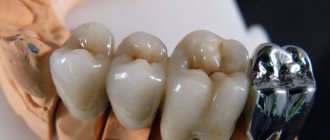Photo: ARM Project Titanium
Next year, the Technodinamika holding of the Rostec State Corporation will begin mass production of bionic hand prostheses.
The developers have set themselves an ambitious task - to create their own “Kalashnikov assault rifle” in the field of bionic prosthetics. In addition, developments in this area are carried out by the Shvabe and KRET holdings. For people who have lost an arm, a bionic prosthesis is an opportunity to feel not like a disabled person, but like a superhero. As the creators note, such prostheses can be adapted for use in complex and dangerous industries. For example, when working remotely with flammable and explosive compounds or in an aggressive environment. Read about what new opportunities modern bionics provides and how the latest bionic prosthesis works in our material.
Types of modern prostheses
By level of amputation:
- cosmetic finger prostheses;
- prosthetic part of the hand;
- full hand prosthesis;
- forearm prosthesis (up to the elbow);
- shoulder prosthesis;
- prosthesis after disarticulation of the shoulder joint.
According to the method of attachment to the limb stump:
- using a silicone case and lock;
- using the anatomical shape of the receiving sleeve;
- using belts (bandage).
According to their intended purpose, there are two groups of prostheses:
- cosmetic - imitate a natural hand, hiding the defect;
- functional - make it possible to use the injured limb.
According to the mechanism of action, functional prostheses are:
- bionic (myoelectric or bioelectric);
- workers (passive);
- traction (active mechanical).
Spare parts for humans
Humanity has been thinking about replacing lost organs since ancient times, gradually improving this area of knowledge and the prostheses themselves. If the first prostheses mainly had an aesthetic purpose and visually hid defects, only in rare cases performing the functions of missing organs, then modern devices in the near future will even be able to expand a person’s capabilities, making him a cybernetic organism, or a cyborg.
Despite the fact that the cyborgization of humanity still looks like a plot from science fiction, cyborgs already live among us, because this can be called any person who uses a mechanical or electronic prosthesis or implant. Today, one of the most advanced and yet affordable types of upper limb prosthetics are bionic prostheses.
Bionics is a science that studies the possibilities of using the properties of living nature in technology. This word was first used in 1958 by American military doctor Jack Steele, who studied natural processes and phenomena in order to apply this knowledge in developments for the US Army. One of the results of the development of bionics was the emergence of electronic prostheses that can interact with human nerve cells.
It is noteworthy that in the USSR such developments began back in 1956, when Doctor of Biological Sciences Yakov Slavutsky described the physiological aspects of bioelectric control of prostheses. And already in 1961, industrial production of Soviet forearm prostheses with bioelectric control began.
Bionic prostheses
The most advanced prostheses, as close as possible to the action of the human hand. To operate, they use an external energy source (rechargeable batteries), are equipped with electric motors and are controlled by electrical signals from the patient’s body. Myoelectric prostheses respond to muscle contraction. Changes in the electrical potential are detected by EMG sensors in the prosthetic socket. They transmit a signal to the microprocessor of the artificial hand, and the prosthesis performs a certain action.
Note!
- Conventional bioelectric prostheses make grip a breeze. This is the basic movement, but it is not always enough.
- Highly functional prosthetics can accommodate a variety of grips. For this, two myodensors are used that sense the activity of the two largest muscles of the arm. To select the desired gesture, the patient sends the prosthesis several sequentially repeated commands - they serve to switch modes by brute force. After training, the prosthesis becomes a real extension of the hand; the person uses it instinctively, performing different types of grips without thinking.
Bionic hand prostheses improve the quality of life of patients. People become able to perform complex activities such as drawing, working with a keyboard, tying shoelaces, cooking and many others. The latest generation of bionic prostheses are capable of performing finger movements. For example, the Touch Bionic hand from Ossur performs functionality close to the actions of a real hand, since each finger is equipped with a separate electric motor. The patient can choose from twelve hand grip options. Your prosthetic technician can help you determine your individual reaction speed and grip strength. This allows you to comfortably work even with very fragile objects, for example, taking a chicken egg.
Pros:
innovative technological appearance, use for all main types of household activities.
Minuses:
high cost, unnatural appearance.
CAD/CAM - a new word in computer modeling
With the advent of innovative technologies, doctors have a unique opportunity to create devices that are ideal for the oral cavity of a particular patient. Computer CAD/CAM techniques eliminate any medical errors.
Cad/Cam installations make computer visualization possible. With their help, virtual models of future incisors, canines and molars are created, which are subsequently turned on a milling machine. Of course, this innovation belongs to the expensive class, and it cannot be found in every dental laboratory. But the results obtained with its help exceed all expectations.
The operation of the Kad/Kam systems includes only 3 sequential stages:
- Taking impressions of the dentition or scanning the oral cavity with a miniature sensor.
- Creating a model of the future product on the screen based on previously made casts or photographs.
- Turning products on a machine.
When using CAD/CAM equipment, the role of humans in the production process is reduced to a minimum. The smart machine itself determines what shape to give to the workpiece and at what angle to grind its edges, so that the patient does not experience discomfort after the end of dental treatment.
Computer technologies are suitable for processing even the most reliable and durable materials - zirconium/aluminum oxide and dioxide. They can also be used to produce artificial units from pressed ceramics.
Bridges, crowns, veneers and lumineers , which were born thanks to Kad/Kam installations, are ideally suited to the person for whom they were created. They are characterized by incredibly precise positioning, fit as tightly as possible to the walls of the base and do not cause any unpleasant sensations. They serve for about twenty years.
Working dentures
A working prosthesis is not at all like a regular hand. It is equipped with an adapter for installing various attachments, which allows you to actively use the upper limb for work. Attachments for writing, cutlery, drawing, printing, and sewing can be attached to the prosthesis. There are grips for hammers, keys, scissors and other tools.
Pros:
inexpensive design, great functionality.
Minuses:
unnatural appearance, the need to purchase attachments for each type of activity and change them during work.
Acry Free - devices that do not chafe
The latest dental prosthetics eliminate the use of hard plastic during the manufacture of removable systems. The dental clinic offers clients designs made from soft and flexible materials. They are elastic and ensure a snug fit of the frame; they fit perfectly in the mouth even without the use of special fixing agents. What is important is that they do not rub or irritate the mucous membranes.
The new generation of removable products is called Acry Free. If we compare them with nylon predecessors, they hold their shape better, do not stretch, do not absorb food odors and do not change their color. Allergic reactions are excluded during their use. The high level of strength of the materials used in the production of Akri Free allows them to chew even hard food without fear of breakage. Getting used to soft systems is much easier. That is why today they are increasingly chosen by people who want to wear removable devices.
Active mechanical prostheses
Active (or “traction”) - allow the artificial hand to compress, due to traction, to hold various objects. The action occurs using mechanical traction (when the opposite shoulder moves, the cable is tightened or loosened). A simple and reliable mechanism allows you to control the strength and speed of your grip.
With enough practice, a person masters fairly subtle movements: he can write with a pen, use cutlery, type, carry a bag, light matches.
Traction prostheses can be installed in children from 8 years of age. Constant training of the muscles of the shoulder and forearm subsequently helps to form a stump and quickly get used to a more advanced bionic prosthesis.
Pros:
simple mechanism, easy to maintain, precise movements when performing some delicate work.
Minuses:
the use of a traction band (can rub), the need to be careful with the prosthesis shell and periodically replace it.
Become a cyborg at the expense of the state
In Russia, about 200 thousand people need prosthetic arms or legs. The state declares assistance in purchasing a prosthesis, but in practice this often turns out to be problematic - either it is very difficult to go through bureaucratic obstacles and receive compensation for the cost of a prosthesis purchased with your own money, or the prostheses provided free of charge turn out to be outdated models and of poor quality. Another problem is that disabled people themselves know little about modern prosthetics and their capabilities in obtaining technical means of rehabilitation.
But the situation is gradually leveling out. As part of the national project “Health,” funding for this area is increasing. Over the past few years, Russia has seen the emergence of its own startups developing promising types of prosthetics that can compete with Western monopolists, at least in the Russian market. The media is showing interest in the topic, an information field is being created step by step, and projects have private and public investors ready to support them with money and production capabilities.
An important stimulus for the development of functional prostheses has been the development of technology. Almost all modern industrial trends are reflected in limb prosthetics - robotization, artificial intelligence, the creation of new generation materials, increasing the capacity and reducing the weight of battery devices, 3D printing and others.
Cosmetic dentures
A cosmetic prosthesis is as close as possible to the natural appearance of a real hand, but is completely non-functional. You won’t be able to do anything complicated with it (for example, buttoning a jacket). The prosthesis consists of four parts: a stump, a supporting socket, a hand frame and a shell (glove). The shell is made of PVC or silicone, matching the patient's skin tone. For greater reliability, images of moles, veins, folds, and palm lines can be applied. It is possible to make a prosthesis with acrylic nails that are as close as possible to real ones.
Pros:
relatively low price, imitates a healthy hand, the hand looks natural - does not attract the attention of others.
Minuses:
the inability to perform any actions, the need to take care of the prosthesis shell and periodically replace it.
How much will the treatment cost?
It is impossible to give a definite and precise answer to the question about the cost of dental prosthetics, because the cost of treatment will consist of a significant number of factors. First of all, you need to find out how many teeth you need to restore, choose a prosthetic technology and the type of dentures. The technology and type of prostheses, as well as their quantity, are the main factors in determining the price of prosthetics.
The total cost of dental prosthetics will also be affected by the need for preliminary dental treatment and sanitation of the oral cavity. You cannot install dentures if your teeth have caries, plaque has accumulated on them, or there is inflammation of the gums. All these conditions must be eliminated before prosthetics begins and, naturally, the need for them will increase the cost of treatment by a certain amount.
IMPORTANT: The price of treatment may also be affected by the need for preliminary depulpation of abutment teeth. It is not always carried out, but if it is decided that this stage cannot be avoided, the price of prosthetics will again increase, since after depulping the tooth it will be necessary to process and seal its canals. And the more there are, the higher the price.
The best way to find out the price of dental prosthetics for yourself is to visit the clinic. The doctor will conduct an examination and diagnosis and, based on them, will draw up a treatment plan for you, which will indicate the full price of prosthetics.
| — Consultation with a dentist | 0 rub. |
| — Installation of a metal-ceramic crown on the tooth stump | 10,000 rub. |
| — Installation of a metal-ceramic crown on an implant | 15,000 rub. |
| — Installation of a CEREC ceramic crown | 25,000 rub. |
| — Installation of a CEREC ceramic crown on an implant | 32500 rub. |
| — Restoration of the coronal part of the tooth with a cast core insert | 6000 rub. |
| — Restoration of the crown part of the tooth with a cast core insert for the 2nd and 3rd root teeth | 8000 rub. |
| — Partially removable acrylic denture up to 3 teeth | 9000 rub. |
| — Restoration of the dentition using a complete removable denture | 19,000 rub. |
| — Installation of partial removable denture Acry free (for 3 teeth) | 16,000 rub. |
| — Restoration of the dentition using a partially removable plate prosthesis Acry free | 34,000 rub. |
History of prosthetics
There are many types of new modern prostheses:
- dental;
- endoprostheses – replace destroyed hip and knee joints;
- ophthalmic;
- limb prostheses;
- articulation prostheses that replace important joints and entire limbs;
- prosthetics of individual body parts - fingers, nose, ear.
When we talk about ancient prosthetics, we imagine an ancient pirate with a wooden prop for a leg and a metal hook for an arm. But the history of prosthetics began much earlier. As evidenced by numerous excavations carried out on the territory of modern North Africa, cosmetic prostheses were installed already in Ancient Egypt. They were made of wood, performed limited functions, and were attached to the body with special leather belts.
The first functional replacement of the forearm and hand dates back to the 16th century, it belonged to the knight Goetz von Berlihigen, who lost his arm in battle. In Russia, the first mechanical prosthetic leg appeared in 1791. It was assembled by the legendary Ivan Kulibin.
The first large enterprise for the production of artificial arms and legs was the Petrograd Institute of Prosthetics. It was founded in 1919 on the basis of the Mariinsky shelter for crippled soldiers, where a workshop for the manufacture of such devices had been operating since the 1880s. Photos of ancient and more modern prostheses are available to everyone. They can be used to study the evolution of such devices.
Functional bionic designs, which are controlled by sending signals from the brain, appeared only in the 21st century. Nowadays, the most modern prosthetic arms and legs are constantly being improved and developed. Such designs are not yet able to completely replace all functions of the limb. Their sensitivity and fine motor skills are not so developed, but progress does not stop, new technologies are appearing and in the future, the loss of a limb above the knee will cease to be a significant problem, because it can be replaced with a high-tech device at an average market price.
"Quadrotti" instead of traditional clasp devices
Modern dentistry offers dentures made of hypoallergenic materials that are not inferior in strength to metal, but much more beautiful. What types are there? For example, Quattro Ti, created from Italian-made Dental D material. Many doctors call them modern analogues of metal clasp systems, which are installed subject to the presence in the mouth of at least part of the surviving elements of the row that can serve as support.
There is no palatal overlap in these designs
“Quadrotti” devices are compact, distribute the chewing load well, are comfortable during use, do not cause any special difficulties during the period of adaptation, and do not deform. Like conventional clasp structures, they can be used for periodontitis and periodontal disease (only at the initial and middle stages) to stabilize the dentition and preserve moving elements. The material from which they are made combines optimal flexibility and rigidity.
Crown on pin
If only one tooth that is more than 70% damaged can be restored, dentists recommend installing a crown. It will strengthen a dead or broken tooth, restoring its shape, function and aesthetic appearance. Durable crowns are installed for a long time, while plastic crowns are intended for temporary use to protect against infections and external influences.
The patient can independently choose the material from several options proposed by the doctor. The recommendations are usually the following:
- All-metal structures made of silver, palladium, titanium or gold can be used to restore posterior teeth. This material is wear-resistant and lasts for more than 20 years, but does not have a very aesthetic appearance.
- Ceramic is desirable for front teeth as it provides a natural appearance and is not susceptible to wear or discoloration. Its service life is within 5−10 years. This material is not suitable for the side row due to insufficient strength for chewing load. The exception is the zirconium dioxide crown, which has high strength characteristics, but its cost is quite high.
- A metal-ceramic crown is suitable for both front and back teeth. It consists of a metal frame, which ensures strength, and a ceramic lining that imitates the natural color of enamel. It lasts about 10 years, but over time the metal base may become visible through the outer layer. In addition to ceramics, the base can be lined with plastic, porcelain or composite material.
- The plastic crown is fragile and is needed only for temporary wear during the preparation of a permanent prosthesis. It hides the ground tooth, prevents pain reactions, makes eating easier and protects against infections.
The advantage of the method is that each of the materials meets the requirements of modern dental prosthetics. New technologies on pins involve fixation in the root system or on an implant, providing high strength. Disadvantages depend on the material chosen.

